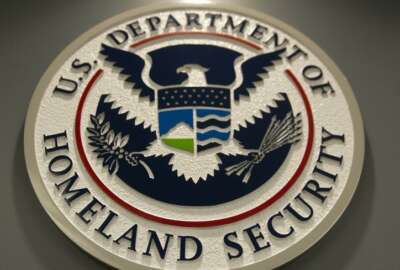
Initial IT policy goals come out in ‘skinny’ 2020 budget request
The Trump administration is asking for 2020 funding for IT modernization at both for governmentwide and specific agency needs.
The White House hasn’t had much luck with getting lawmakers to fully fund the Technology Modernization Fund over the last two years. The Trump administration received $110 million in 2018 and 2019, out of the $250 million authorized in the Modernizing Government Technology Act and the $438 million it requested in fiscal 2018 and 2019.
But that didn’t stop President Donald Trump from including in the fiscal 2020 budget a request for $150 million for the TMF.
“From among nearly 50 proposals totaling over $500 million in the first 10 months, the [TMF] board has so far funded seven projects totaling almost $90 million,” the administration writes in the “skinny” budget request sent to Congress on Monday. “The administration requests $150 million for the TMF in 2020 to provide seed funding for additional projects and to allow the TMF to tackle more complex, governmentwide efforts.”
Along with the TMF money, the White House says it’s asking Congress to authorize the other piece of the MGT Act, working capital funds for those agencies that need the authority. The “skinny” budget doesn’t provide details on which agencies need that authority.
Congress took care of one agency in the 2019 spending, establishing a working capital fund for the Small Business Administration. SBA can transfer up to three percent of funding from salaries and expenses and from the business loan program accounts to use for IT systems modernization initiatives.
The TMF fund was one of a handful of details the administration released about its plans to modernize federal technology. The administration is expected to release full analytical perspectives section of the budget next week, which likely will include the Office of Management and Budget’s IT modernization goals and initiatives over the next year.
In the meantime, the administration provided a few glimpses of its plans.
For example, the administration says it will “unveil an Acquisition Modernization Plan to guide incremental transformation through continuous process improvement testing, feedback, re-testing, and scaling.” OMB also says it will work with the Congress on a proposed acquisition test authority pilot.
The General Services Administration said it requested $25.9 million to support governmentwide management of IT reporting, including management of the Federal IT Dashboard, and to establish a new project management office for the governmentwide implementation of Technology Business Management principles.
It also asked for $58.4 million for the Federal Citizen Services Fund to enhance cybersecurity and citizens’ ability to securely interact with federal agencies through the Login.gov platform.
Additionally, OMB says it will “direct agencies to establish multi-year learning agendas to strategically plan their evidence building activities in order to improve policy and programs. Agencies will also designate an Evaluation Officer to help lead evidence-building activities,” as part of its implementation of the Foundations for Evidence-Based Policymaking Act of 2018.
For the cross-agency priority around data transparency and accountability, OMB says the 2020 budget request would establish a U.S. Federal Data Service within the Department of Commerce’s Office of the Undersecretary for Economic Affairs. The administration also wants funding so the Federal Geographic Data Committee to improve management of geospatial data and implement the provisions of the upcoming final Federal Data Strategy.
One level down, agencies continue to call out IT modernization priorities as part of their budget requests.
Homeland Security Department
Related Stories

IT modernization, CIO authorities and other nuggets from the 2019 funding bill

Evidence-based policy bill passage sets stage for upcoming federal data strategy
The administration also wants to help DHS address its cyber workforce needs by letting them hire at least 150 new cyber experts by the end of 2020 through its Cyber Talent Management System. The CTMS exempts the agency from many of the rules around hiring and compensation under Title V.
Transportation Department
The administration wants DOT to continue its work to consolidate and modernize its technology infrastructure. To that end, the department is asking for $502 million for its working capital fund, “which would allow the department to continue to consolidate IT investments into the Office of the Secretary of Transportation.”
Treasury Department
Treasury’s 2020 request is relatively small, only $18 million to for additionally cyber protections of its systems. “These funds are requested in addition to bureau-level investments, and would be centrally managed to strengthen the security of Treasury’s highest-value IT assets and improve Treasury’s response and recovery capabilities,” the document states.
Labor Department
It’s unclear how much money Labor is asking for, but the agency says its implementing reforms around its administrative activities, including information technology, procurement, human resources, financial management and physical security, which traditionally have been separated across its sub-components. Labor is centralizing these activities “to improve oversight, eliminate duplication, save money, and achieve economies of scale. In addition, the budget includes funding and more flexibilities for DOL’s chief information officer to modernize the department’s legacy case management systems by reallocating base resources.”
Department of Housing and Urban Development/Federal Housing Administration
The administration called out the FHA’s problematic IT systems specifically asking for $20 million more than what it received in 2019.
Across HUD, the agency also is asking for $20 million for its financial transformation plan to strengthen its financial reporting, accounting operations and internal controls. HUD has struggled to modernize its financial management system, moving to Treasury’s shared services provider.
NASA
The space agency also is struggling with IT and cybersecurity and the administration recognized it by asking for more investments. While the “skinny” budget doesn’t specifically say how much more, NASA recognizes mission support areas such as facility maintenance, information technology and mission safety need some help.
The administration also funds numerous construction programs, including $126 million to consolidate research and production facilities at two NASA centers.
Copyright © 2024 Federal News Network. All rights reserved. This website is not intended for users located within the European Economic Area.
Jason Miller is executive editor of Federal News Network and directs news coverage on the people, policy and programs of the federal government.
Follow @jmillerWFED





